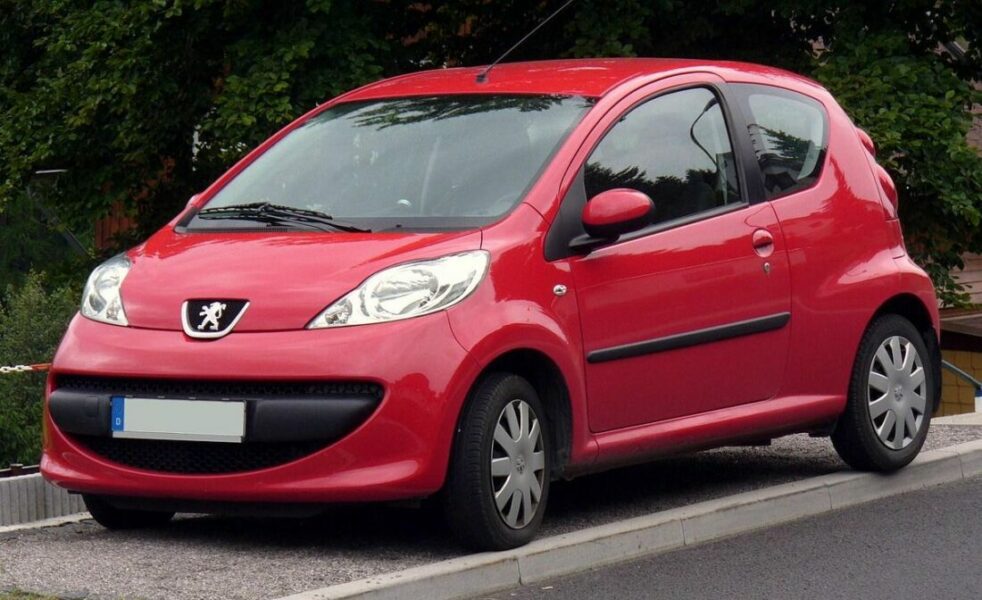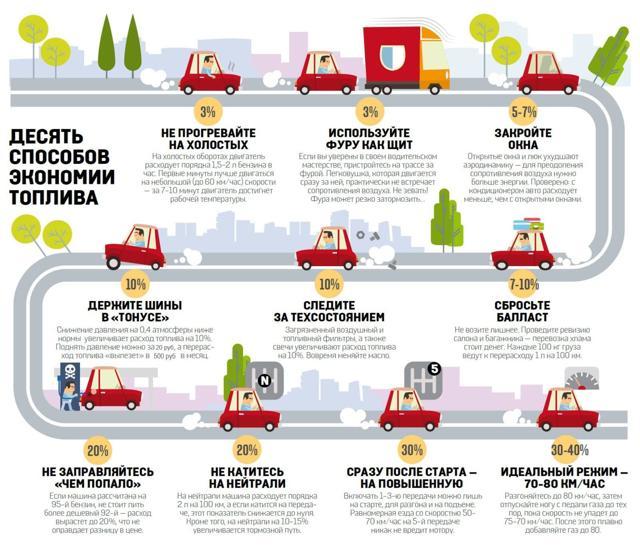
Peugeot 107 1.4 HDi Style
No it is not! If three successful car brands such as Citroën, Peugeot and Toyota come together, and if they fit the market right, even such a crazy thing can turn out to be smart. By the way, Citroën and Peugeot are real experts in this regard. Together they form the PSA group, which has been successfully operating for many years. At the same time, they constantly associate with other brands.
In the field of light vans and limousine vans, for example, the Italian Fiat and Lancia. When the engine gets known, with the Ford Group and its brands (Mazda, Land Rover, Jaguar (). And you know what? Everywhere their collaboration works. Why not also tackle the urban small car project they worked on with Toyota ?
“Because these three little ones don't look at the road as much as you'd expect,” you say. True, C1, Aygo and 107 are not among the most popular models on the road. But we must not forget that Peugeot has hardly entered the market, that these three little ones do not belong to the circle of family cars that buyers most often touch, but to purely urban ones (so that they can play the role of another car at home.), as well as Ljubljana and other similar large Slovenian cities will not be so huge for a long time that everyday transport in them would be a more serious problem.
This is usually the most important reason why people buy such small cars. Right behind it - and I dare say it with confidence - is their charm. And when the question of it comes up, the lion shows up pretty well. He should also be very grateful to his older brothers for this. French cars with the emblem of a lion on the hind leg have become unprecedented magicians in recent years. And if the stronger floor still somehow resists the magnet we call formation, the softer floor easily succumbs.
So be careful, this can easily happen to you even with the smallest lion. Especially if it appears in front of you in the color combination that reigned in the test car. Dark exterior and light interior are considered a tried and true recipe that is always loved. And this time it worked. It's the same with the rich equipment.
Peugeot had the richest package called Style (how else?), and it includes accessories such as a tachometer (this is more interesting due to its unusualness - it is attached to the speedometer - as a convenience of use), air conditioning. (undoubtedly one of the most useful, though only available in manual mode), power windows in the front door, remote central locking, folding and split backrest in a ratio of 50: 50 (by the way, it can come in handy, because the trunk is not gigantic) and not last but not least, the radio or audio system. But at the same time, unfortunately, the design (typical of Peugeot) comes to the fore, and not the usability.
In any case, we have to congratulate the designers, as they managed to convince the engineers that they chose to insert the button in the place where the rotary volume knob is usually located, which, from a design point of view, is undoubtedly more appropriate. But no more. It quickly becomes clear that our claims are true. The most you can think of in the Peugeot 107 under Communications Equipment is a radio with a CD player and two speakers.
Soundproofing is hardly average by the standards (quite understandable for such a small car). But in the end, this means that you have to constantly adjust the volume of the radio in accordance with the speed of movement. However, trust me, it ends up becoming an annoying task for the devil. Some will miss a closed drawer or a place inside where they can hide small objects from the eyes of passers-by. Otherwise, you will be very comfortable in the smallest lion. Even on slightly longer routes.
And now the question arises: is it worth paying extra for diesel? My opinion is no. Moreover, the difference in consumption is so small that 350 thousand overpayments will not be returned to you. You have to pay this difference mainly because of the more expensive technology that modern diesels have to put in if they are to do their job cleanly enough and, above all, as satisfactorily as gasoline engines.
Let's move on to the facts. Apart from the diesel, there is only one other engine available in this Peugeot, namely the significantly smaller petrol engine. It is a three-cylinder, without a turbocharger, therefore with four valves per cylinder (the diesel has only two) and a power of 68 hp. So at 14 hp. more than a diesel engine can handle. Diesel wins in torque; instead of 93 gives 130 Nm. But in practice, this is still not enough to defeat the gas station worker. Our measurements showed that the three-cylinder gasoline engine accelerates from standstill to 100 kilometers per hour in 12 seconds.
Thus, 2 seconds faster than the diesel, the difference after the first kilometer remains almost the same. And the final speed is also in favor of refueling. With it, you will exceed the limit of 5 kilometers per hour (160 km / h), with a diesel engine you will not succeed (162 km / h). At least not at the level. Anyway, diesel is better in flexibility. But again, not so much that we can fully devote ourselves to leisure. The 156 Nm of torque at a favorable 130 rpm is enough for a pleasant cruise on local roads, but on steep descents you will need to use the gear lever almost as often as with a gasoline engine.
Diesel will eventually consume a little less. But even here it is not true that the 350 thousand mark-up will be returned in exemplary short terms. During normal driving, you can expect on average a good liter less fuel per hundred kilometers, on the other hand, the higher maintenance costs required for diesel engines and the diesel smell that will disappear every time you leave the gas station. station. ...
Hence, the arguments deserve consideration. Especially about the smell of gas oil, which has nothing to do with the appeal we mean in the name.
Matevž Koroshec
Photo: Aleš Pavletič.
Peugeot 107 1.4 HDi Style
Basic data
| Sales: | Peugeot Slovenia doo |
|---|---|
| Base model price: | 10.257,05 € |
| Test model cost: | 11.997,16 € |
| Calculate the cost of auto insurance | |
| Power: | 40kW (54 KM) |
| Acceleration (0-100 km / h): | 15,6 with |
| Maximum speed: | 154 km / h |
| Mixed flow ECE: | 4,1l / 100km |
Technical information
| engine: | 4-cylinder - 4-stroke - in-line - direct injection turbodiesel - displacement 1398 cm3 - maximum power 40 kW (54 hp) at 4000 rpm - maximum torque 130 Nm at 1750 rpm. |
|---|---|
| Energy transfer: | front wheel drive engine - 5-speed manual transmission - tires 155/65 R 14 T (Continental ContiEcoContact 3). |
| Capacity: | top speed 154 km / h - acceleration 0-100 km / h in 15,6 s - fuel consumption (ECE) 5,3 / 3,4 / 4,1 l / 100 km. |
| Mass: | empty vehicle 890 kg - permissible gross weight 1245 kg. |
| External dimensions: | length 3430 mm - width 1630 mm - height 1465 mm. |
| Inner dimensions: | fuel tank 35 l. |
| Box: | 139 712-l |
Our measurements
| T = 9 ° C / p = 1010 mbar / rel. Ownership: 83% / Condition, km meter: 1471 km | |
| Acceleration 0-100km: | 15,4s |
|---|---|
| 402m from the city: | 19,5 years ( 111 km / h) |
| 1000m from the city: | 36,5 years ( 139 km / h) |
| Flexibility 50-90km / h: | 12,7s |
| Flexibility 80-120km / h: | 24,3s |
| Maximum speed: | 156km / h (V.) |
| test consumption: | 6,4 l / 100km |
| Braking distance at 100 km / h: | 44,3m |
| AM table: | 45m |
evaluation
In Slovenian cities, there is no need for such small cars yet, so it is obvious that you will buy one of the three babies mainly because you like them, not because you really need them. Which, in the end, will depend mainly on the attractiveness and price. If you need a hint, we can trust you that 107 has some pretty good options in this regard.
We praise and reproach
collectivity
small town
five doors
space ahead
set of equipment
no closed box
only two speakers
instead of the rotary knob, set the radio volume
side seat grip
(also) delicate dashboard illumination
